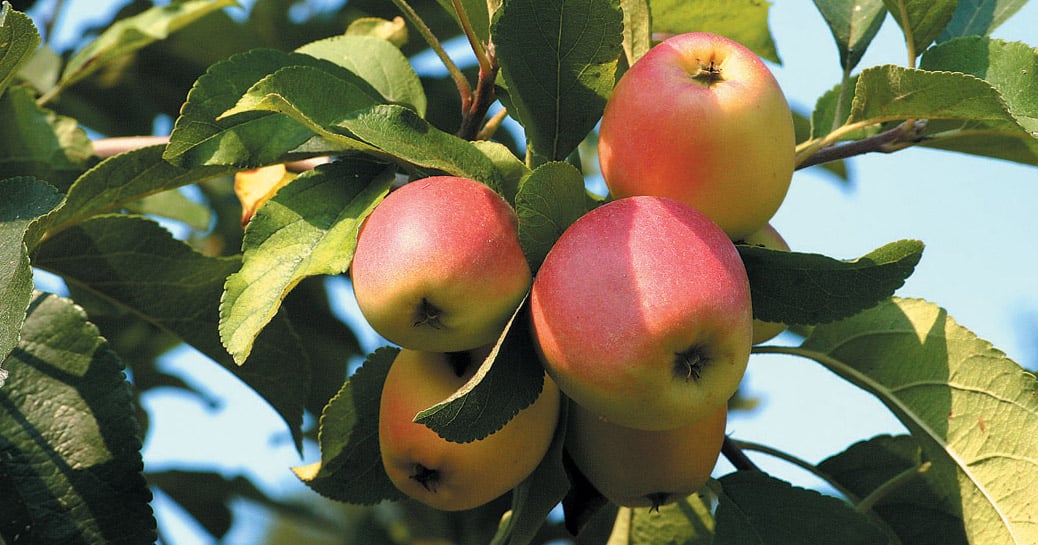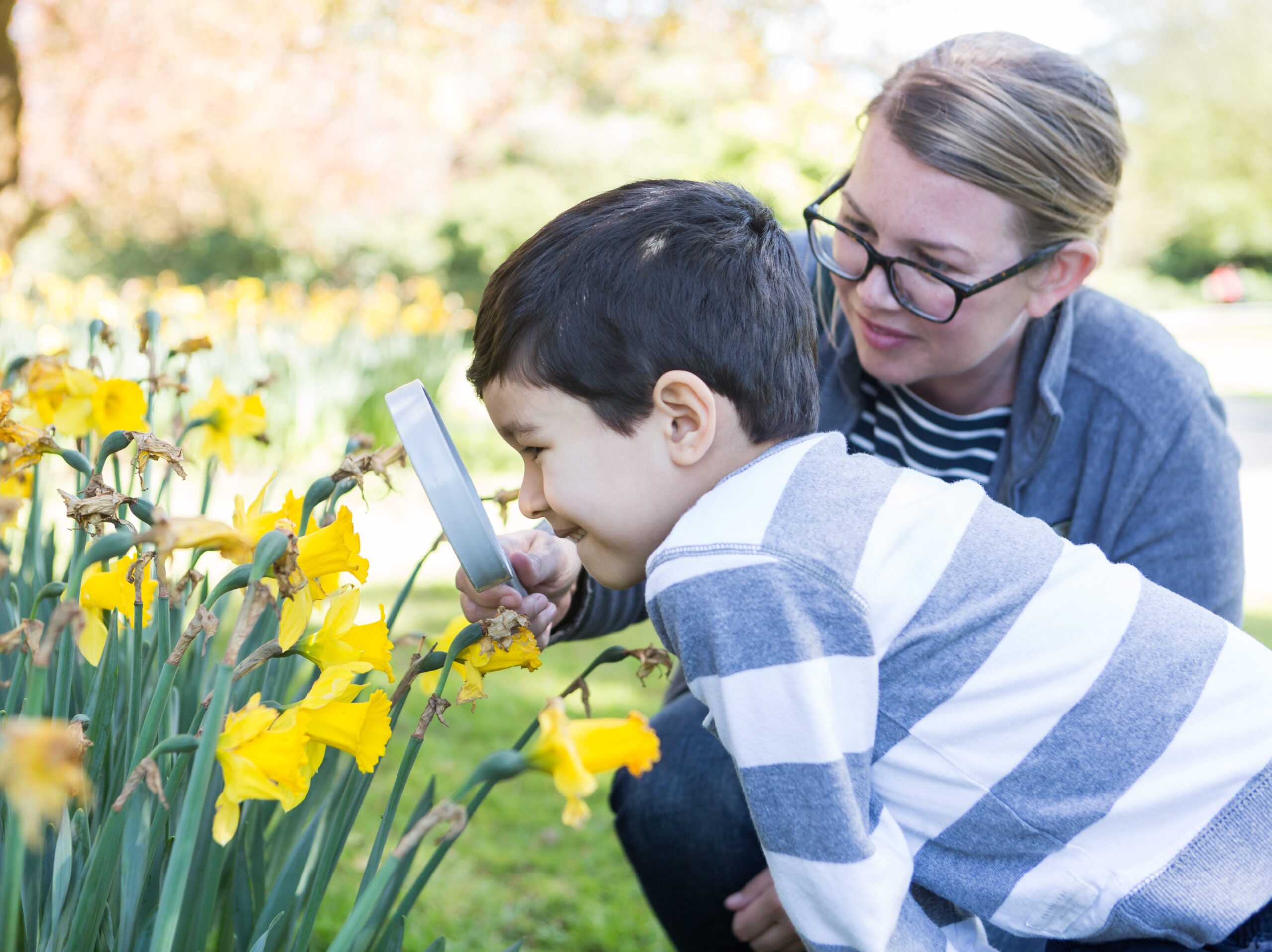

Contributor
- Topics: Archive

Not everyone has room for an extensive orchard, but even a small garden has room for a single fruit tree. Finding just the right tree can be a challenge, with so many available at local nurseries and through the internet. Lotusland has begun to focus on the cultivars of citrus and deciduous fruit trees that thrive in their orchard in Santa Barbara, in turn helping local Southern California gardeners determine what will grow best in those conditions.
Visitors to Lotusland respond most to the exotic plants such as cacti and cycads, the tropical splendor of the bromeliad or fern gardens, or the meditative quality of the Japanese garden. These designs and plant selections, our legacy from Madame Walska who purchased the estate in 1941, often overwhelm the remnants of the more staid estate garden, Cuesta Linda, which was laid out in the 1920s for the Gavit family. But Madame Walska retained some of the formal areas, including the rose garden and parterre with fountains reminiscent of European estate gardens, as well as an area devoted to growing fruit trees, segregated into two sections. Citrus trees are grouped together around a lemon arbor, and an assortment of mostly deciduous stone (peaches and plums) and pome (pears and apples) fruits form a “gentleman’s orchard” nearby. Such orchards were intended to showcase a large variety of different fruits (as opposed to a production orchard of only one or a few varieties) and provided produce for the family table. There were also a walnut grove and a number of grape vines at the northern edge of the property that did not survive the Coyote wildfire of 1964.

Madame Walska may have inherited an established orchard, but she continued to add to it. Her niece recalls that she wanted one of everything, particularly exotic fruits such as papaya and cherimoya that she had learned to enjoy. Rows and rows of raspberries were also planted to provide fruit for her table.
Lotusland’s orchards are undergoing renovations as older trees are removed and replaced. In the deciduous orchard, the policy has been to plant newer selections that have been bred for the relatively warm winters of the South Coast. Fruit trees such as peaches, pears, and apples from temperate climate zones require a minimum number of “chill hours” to produce and bear fruit. Chill hours are calculated by adding together the number of chill units, which actually vary with the temperatures experienced (between 34° and 51°F) during winter. Santa Barbara receives an average of 500 chill hours or less each year. Many fruit tree varieties require 700 to 1,000 hours of chilling to release their buds from dormancy and produce flowers and fruit.

Selecting for Warm Climates
In the last few decades, growers in California, southern states like Georgia and Florida, and other mild-winter areas, such as Israel have been hybridizing and selecting cultivars that have lower chill requirements. It is these selections that are slowly replacing the older trees in the deciduous orchard at Lotusland. In recent years, apple varieties like ‘Beverly Hills’ and ‘Ein Shemer’, requiring less than 150 chill hours, have joined other favorites such as ‘Fuji’ and ‘Pink Lady’. Growing side-by-side with regular ‘Hood’ and ‘Monterrey’ pears are Asian pears such as ‘Tsu Li’ and ‘Ya Li’, peaches ‘Earlitreat’ and ‘Mid-Pride’, and nectarines ‘Desert Delight’ and ‘Panamint’. All of these selections bear well with less than 500 chill hours. Other novelty fruits include a ‘Wonderful’ pomegranate (Punica granatum ‘Wonderful’), as well as two cherry cultivars, ‘Stella’ and ‘Craig’s Crimson’, two cherry-plum hybrids, ‘Delight’ and ‘Sprite’, almonds ‘Nonpareil’, ‘Garden Prince’ and ‘Price’—and more.

Similar renovations have been taking place in the citrus orchard where old or diseased trees are being replaced with proven producers. Recent introductions include key lime, also known as Mexican lime (Citrus aurantiifolia), ‘Meyer’ and ‘Pink Lemonade’ lemons (Citrus limon) and improved tangerine cultivars such as ‘Dancy’ and ‘Pixie’. A few holes remain, but they will be filled as new and interesting selections are located. Already waiting in the nursery is a cutting-grown plant of an orange tree (the Agua Tibia strain) that was grown in Spanish times; it came to us from the San Gabriel Mission by way of the UC Riverside citrus collection.
Staff and volunteers enjoy the delicious and healthful harvests from both orchards. Occasionally, bumper crops have been gathered to distribute to needy members of the community through the Food Bank or other charity organizations. Lotusland’s orchards preserve a way of life not often encountered today, but that was once a part of estate living.
Reprinted and expanded from the Lotusland Newsletter, Winter 2006.

Chill Hours
Chill hours are calculated by adding together the number of chill units accumulated during a plant’s winter dormancy. Chill units vary with the temperature experienced between 34°F and 51°F. For example, it takes two hours at 35°F to accumulate one chill unit, but only one hour when temperatures are between 36°F and 48°F. Chill units may also be subtracted if winter temperatures rise above 61°F, which is quite normal for much of Southern California.
Share:
Social Media
Garden Futurist Podcast
Most Popular
Videos
Topics
Related Posts

Ground Up Science for Greener Cities with Garden Futurist Dr. Alessandro Ossola
Spring 2023 Listen to the Podcast here. Alessandro Ossola is a scientist who gets very excited about the challenge of climate change allowing for an

Readying Urban Forests for Climate Realities with Garden Futurist Dr. Greg McPherson
Winter 2023 Listen to the Podcast here. “Going from the mow and blow to a more horticulturally knowledgeable approach to maintaining the landscape. And that

January Showers Bring February flowers…
Fall 2022 It may not quite have the same ring to it as the old English proverb, but it has a lot more truth to

Welcome, Greywater, to the Garden
Summer 2022 Oh, summer: delightful warm air, tomatoes swelling on the vine, fragrant blooms on an evening stroll. When it’s warm and rainless, how is









Responses